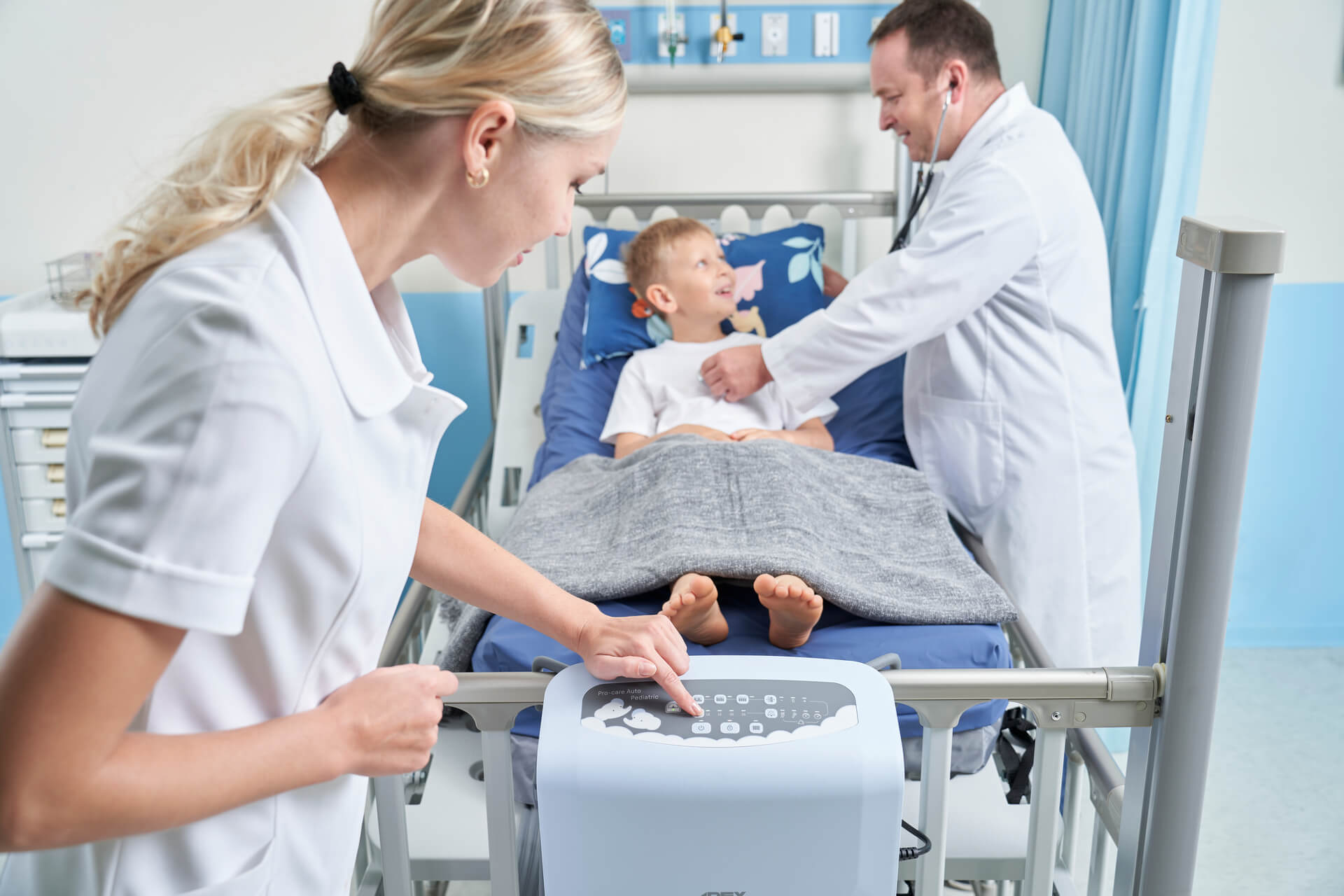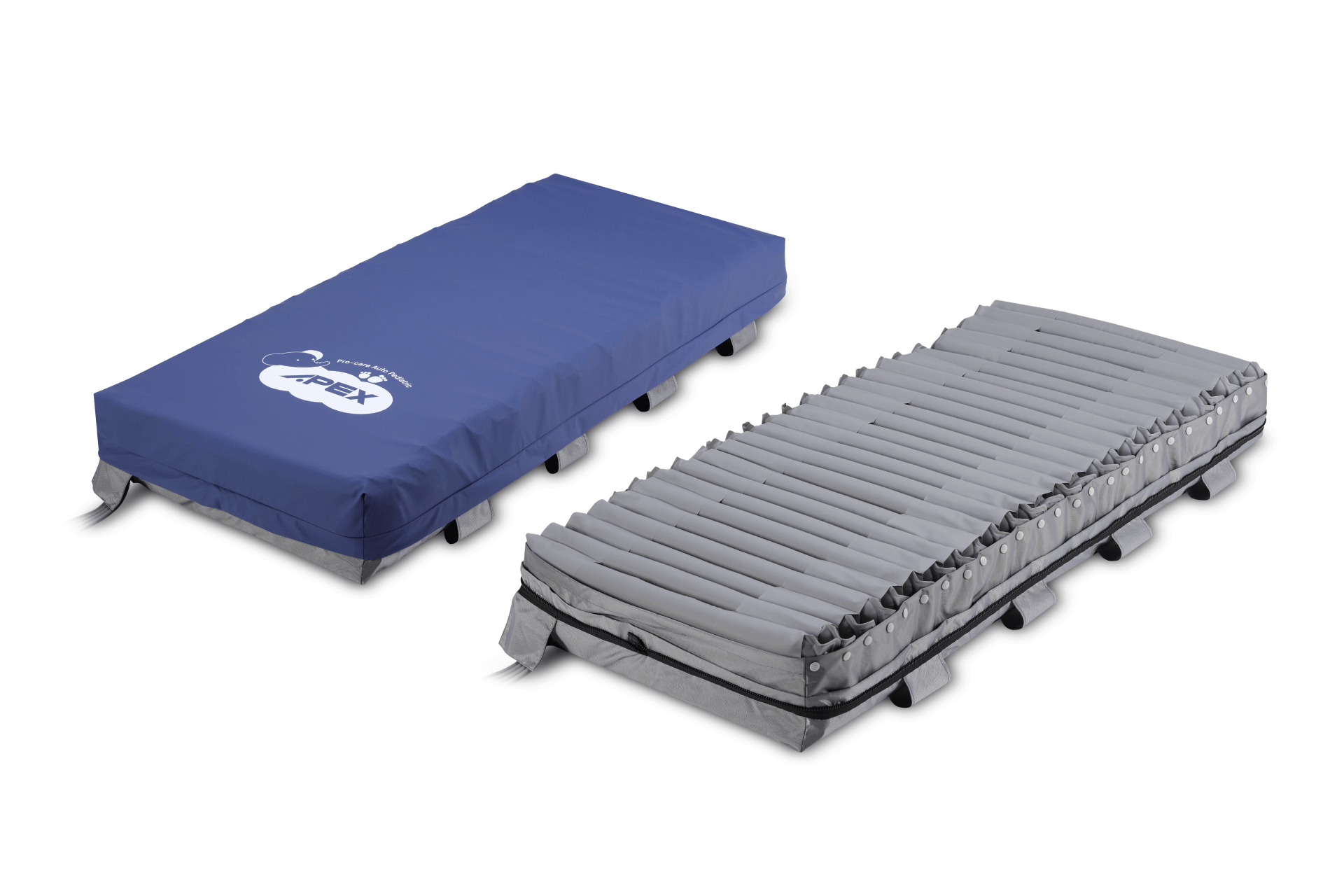Invest in Progress for Your Paediatric Care

Pressure ulcers are blisters or open wounds, forming when pressure is applied to the same area of skin for a period of time.1, 2 Pressure ulcers can develop for a variety of reasons, particularly for children that are unwell. These painful ulcers can be caused by;
- Pressure – from the body and any other object
- Friction and shear – where skin is pulled or rubbed against a surface
- Moisture – impacting skin integrity
- Previous damage – if someone has had a pressure ulcer in the past
Pressure ulcers can progressively develop, and can lead
to open wounds, most commonly on bony prominences, such as the head, shoulder
blades, hips, buttocks and heals, among other places.
Children that have additional needs may have further complications that contribute to the risk of developing a pressure ulcer3;
- Underweight - with less protection for bony areas
- Overweight - with decreased ease of movement
- Lack of normal movement - due to disability, sickness, fatigue or sedation, surgery, or trauma
Advice for preventing pressure ulcers include frequent
repositioning, good skin hygiene, a healthy diet, and frequent skin
inspections. In addition to this, professional medical equipment can also
assist in avoiding damage.
Many pressure injury prevention products are manufactured and marketed towards adults, particularly elderly care environments. However, these products are also very relevant for paediatric care, though the majority of products are not well optimised for this use.
The Wellell Pro-care Auto Paediatric is suitable for children that are High or Very High risk of pressure injuries, improving pressure relief delivery and experience for paediatric care. The product is enhanced for a comforting experience and stability for paediatric patients that weigh between 5 and 95kg, with an Alternating Low Pressure mode for optimising full body pressure distribution with gentle movements.

The patented design incorporates narrower, sturdier and more tightly packed air cells, enhancing pressure relief and preventing issues like bottoming out or trapped limbs. This technology empowers caregivers by providing effective pressure relief and supporting the smaller patient’s body contour in any position to prevent sinking between air cells.
Alongside this, the advanced, biocompatible stretch cover material with a high moisture-vapour transmission rate, along with Micro Low Air Loss design, ensures effective ventilation and reduces heat/moisture, optimising patient recovery and mitigating pressure injury risks.
Check out the product page below, or contact us to learn more about this innovative pressure injury solution. Let’s work together to provide better treatment.
Pro-care Auto Paediatric
1.
National Institute for Health and Care
Excellence, 2014. Pressure
ulcers: prevention and management: Information for the public: What is a
pressure ulcer? [Online]. London: NICE. Available
from: https://www.nice.org.uk/guidance/cg179/ifp/chapter/what-is-a-pressure-ulcer [Accessed: 21 May 2023]
2.
NHS, 2023. Pressure ulcers (pressure
sores) [Online]. London: National Health Service. Available from: https://www.nhs.uk/conditions/pressure-sores/. [Accessed: 21 May 2024]
3.
NHS, 2024. Preventing pressure ulcers in
children and young people [Online]. Gloucester: National Health Service.
Available from https://www.gloshospitals.nhs.uk/your-visit/patient-information-leaflets/preventing-pressure-ulces-children-and-young-people-ghpi1438_10_17/. [Accessed: 21 May 2024]

